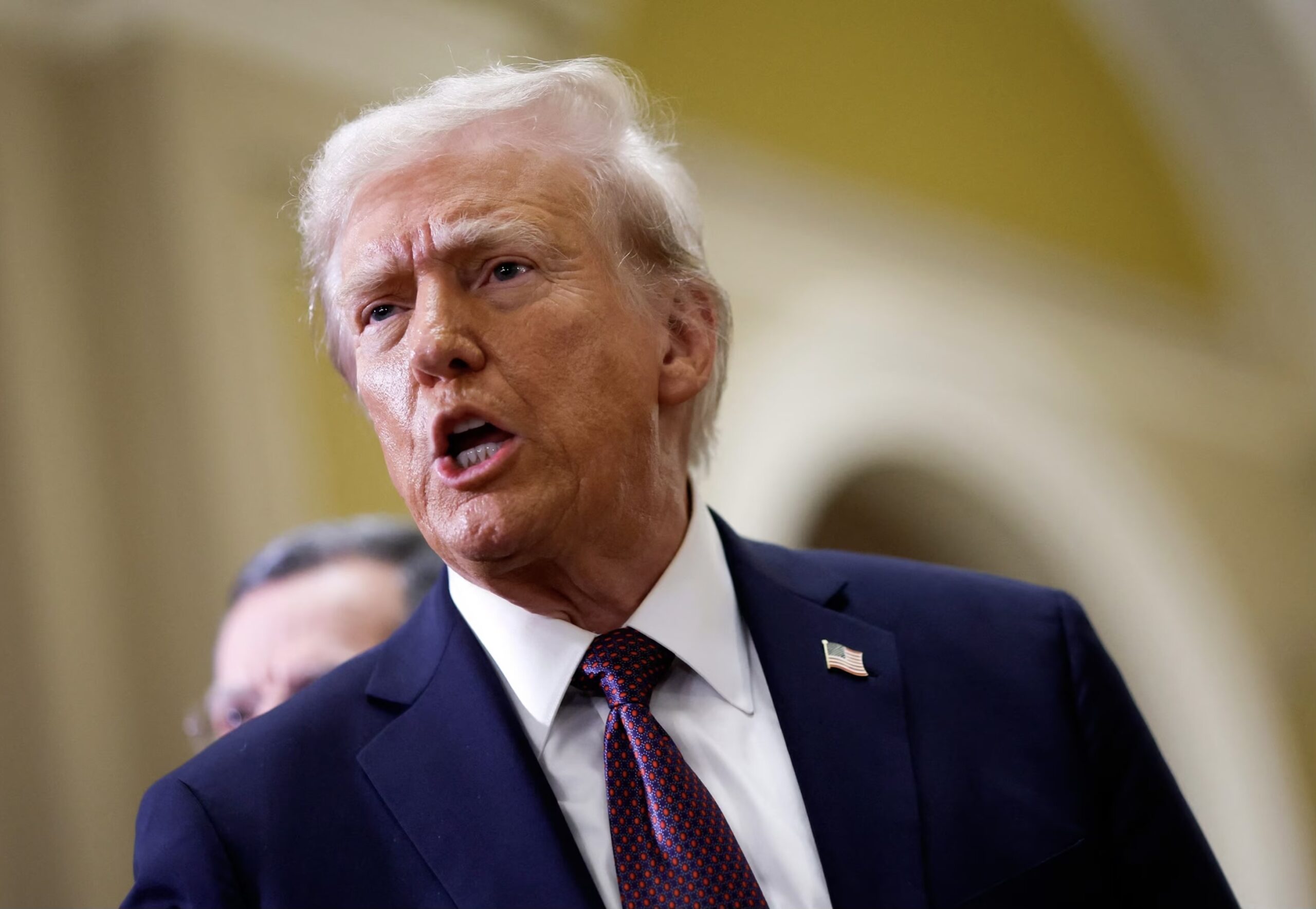President Trump’s approval rating sees a significant surge
One month into his current term, President Donald Trump’s approval ratings remain solid, showing resilience despite the swift implementation of his new policy agenda. Recent polls suggest that a significant portion of the American public continues to support his leadership, even as he pushes forward with a range of controversial initiatives.
Polling data reveals that Trump’s approval ratings remain steady at or above the 50 percent mark. For instance, a SurveyUSA poll conducted between February 13 and 16 found that 51 percent of respondents approved of his performance, with 45 percent expressing disapproval. This translated into a net approval score of +6 points. Similarly, a Morning Consult poll, conducted between February 14 and 16, showed that 50 percent of participants approved of Trump’s job performance, compared to 47 percent who disapproved. Analysts note that these numbers represent a stabilization in approval after a slight decline in recent weeks. According to political analyst Eli Yokley, the slight improvement in approval from the previous week indicates that voters are increasingly supportive of the president’s performance.
Regional differences in Trump’s approval ratings are also significant. The SurveyUSA poll highlighted a strong preference for his policies in rural areas, where 59 percent of respondents approved of his leadership. Suburban areas, however, reflected more mixed feelings with only 48 percent approval, while urban areas registered a slightly higher approval rate of 51 percent. These regional variations suggest that Trump’s policies are particularly popular among rural voters, but less so in more urbanized and suburban regions.
Further reinforcing his approval numbers, a survey conducted by the Republican polling firm Napolitan News indicated that 55 percent of respondents approved of Trump’s performance, while 43 percent disapproved, yielding a net approval score of +12 points. This poll also showed that his approval rating has remained consistently above 50 percent since his return to office on January 20, peaking at 57 percent during his first week. These findings underscore the president’s solid base of support, which has been crucial for his political standing.
Although Trump’s approval ratings are relatively strong, some experts caution that the president’s personal favorability ratings are not as high. While many voters approve of his policies, especially in rural areas, some may not personally like his demeanor or behavior. Chris Jackson, Senior Vice President of U.S. Public Affairs at Ipsos, noted that some voters who don’t necessarily admire Trump as a person still believe he is the right leader for the country at this moment. This distinction between job approval and personal favorability highlights the complexity of public opinion, where people may support a leader’s actions even if they are not fond of his personality or conduct.
In addition to his steady approval ratings, President Trump’s recent executive actions have contributed to a shift in the political landscape. One such action was an executive order aimed at dismantling Diversity, Equity, and Inclusion (DEI) programs within the federal government and among federal contractors. This policy change marks a significant departure from previous administrations that had promoted DEI initiatives. While many private companies had already begun scaling back their DEI programs, Trump’s order accelerated this trend, signaling a shift in priorities within both government and business sectors.
These policy shifts reflect Trump’s ongoing effort to consolidate support among his conservative base while appealing to voters who prioritize traditional values. At the same time, his administration’s approach to governance appears to be steering away from the progressive reforms championed by previous administrations. This balancing act—maintaining broad approval while enacting policies that are controversial to some—will continue to define the political climate throughout his second term.
As the administration moves forward, these steady approval ratings, coupled with aggressive policy changes, will have major implications for the upcoming election cycle. If Trump can continue to maintain public confidence while advancing his political agenda, it could provide him with a strong foundation for the future, both in terms of passing key legislation and securing electoral victories.
In conclusion, President Trump’s approval ratings remain resilient one month into his term, with recent polls showing broad support for his performance, particularly in rural areas. His ability to maintain a steady approval rating amid significant policy changes, such as the rollback of DEI programs, indicates that his leadership style resonates with a large segment of the American public. While challenges remain, the president’s solid approval ratings provide a strong platform as he navigates the political landscape and continues to shape his vision for the country.
